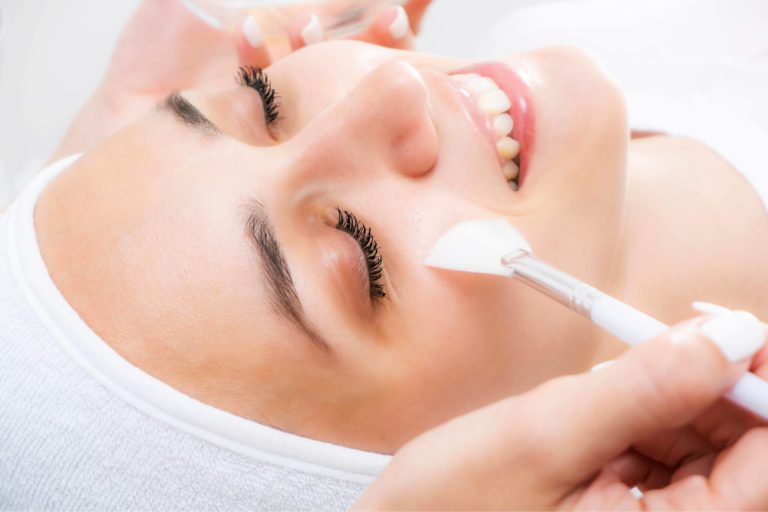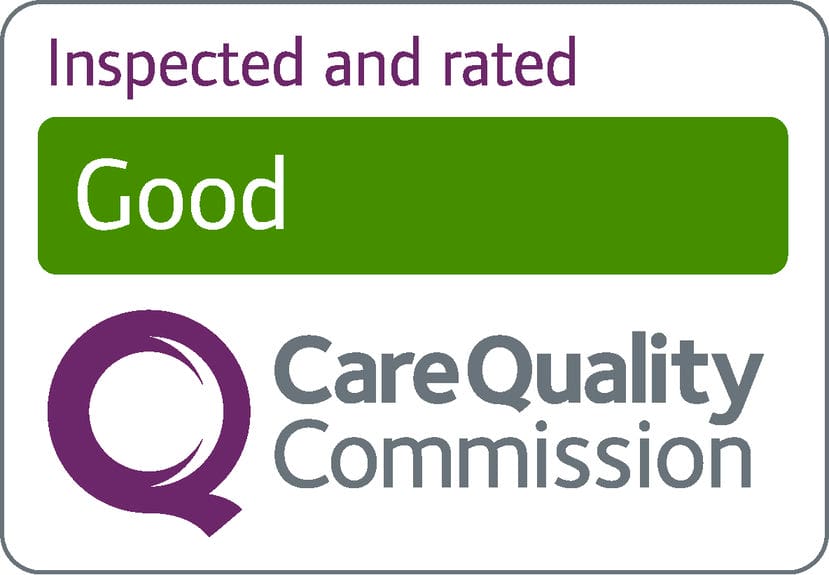A common dermatological concern, hyperpigmentation describes patches of skin that become darker than the rest of the skin. There are different types and with this comes different causes and suitable treatment types.
Probably the most common types of hyperpigmentation are sun spots; melasma; and post-inflammatory hyperpigmentation. All three can affect all skin colours and genders.
So, let’s break it down…
Melasma
Often referred to as ‘the mask of pregnancy’- a bit confusing because men can be affected- however it is most common in women, especially during pregnancy. It is believed to stem from the melanocytes-the skin cells that produce pigment- over producing melanin (pigment). The true cause is not known, but hormones are thought to contribute to Melasma developing, commonly hormonal birth-control pills and pregnancy. Thyroid problems and some medications, including anti-epileptics, are also thought to be factors.
Melasma is most often seen on the face, specifically, the forehead, nose, upper lip, chin and cheeks and it sometimes resembles the shape of a butterfly when it affects all these areas at once.
Melasma is not life-threatening, painful, or contagious, however, it can be upsetting to those of us who suffer with it. Unfortunately, there is no cure for this form of hyperpigmentation, however, there are powerful treatments that can help you manage it.
Where possible, it’s advised to avoid known contributors to Melasma such as hormonal drugs. The sun and sun beds can make Melasma worse, so please avoid actively tanning yourself; grab yourself some fake tan, not only will your Melasma thank you, but your skin will also be less prone to premature ageing (wrinkles, thin skin, age spots) and of course, skin cancer.
Skin treatment for melasma
Before you consider doing anything to your skin, please commit yourself to a daily physical sun cream with an SPF of 30 plus. I say this because I wouldn’t want you to spend your time and money on treatment when SPF is a basic but very important step in helping to stop Melasma from getting worse.
Tip: Pop your sun cream in your bag/car/have a spare or decant some and leave in your desk so that you can reapply during the day. The suns UV rays are around us 365 days a year, not just when it’s sunny or warm, so daily SPF use is vital for all skins, especially those with hyperpigmentation. Oh, and the UV rays come through windows so even if you’re inside or spend a lot of time in the car, the rays are gonna get you.
Skin treatment for Melasma
Our ‘go to’ treatment for melasma is Obagi Nu Derm. We do have laser treatments that are allowed to treat melasma but, in our experience and opinion, the Nu-Derm system is safer for Melasma and offers extremely good results. Laser treatment, although it can be very effective, runs the risk of stimulating melasma and ultimately making it worse.
Nu-Derm is a powerful treatment system which includes prescription-strength and clinically proven ingredients that aren’t available ‘over the counter’. This treatment works at a cellular level promoting skin cell turn-over allowing old and damaged cells to be replaced with healthy new cells. This not only helps to reduce signs of melasma, but it also improves signs of skin ageing (what’s not to like about that?).
Chemical peel melasma
We can combine the Obagi Nu Derm treatment with the Mandelic acid chemical peel to further enhance your outcome. This chemical peel is one of the least irritating of all the peels because of its large molecular size. This means it’s released into the skin slower than other chemical peels, therefore mandelic acid can even treat very sensitive skins, including super sensitive Rosacea skin types.
The gentle, yet powerful exfoliation mandelic offers enhances your skins regeneration mechanism, in turn helping to break down and eventually help shed some of those hyperpigmented skin cells. Mandelic acid also helps to reduce inflammation in the skin which is known to stimulate melanin production; one of the reasons we choose these treatments over lasers which can cause skin inflammation.
Best chemical peel for melasma: Mandelic acid peels are a non-irritating yet powerful treatment for melasma. It can be used as a stand-alone treatment but, ideally, it’s used within a treatment plan for melasma as this condition often requires a multi-pronged approach.
Sun spots
Officially named solar lentigines, sun spots, unsurprisingly have everything to do with sun exposure. They’re most often seen in areas that are typically exposed to the sun-face, hands, tops of feet, shoulders and decolletage are the usual suspects.
When our skin is exposed to the sun it produces extra melanin (pigment) in an attempt to protect itself; sometimes this excess melanin becomes clumped together and this is when age spots appear; you can get a single age spot, or you can get clusters of them.
Daily sun cream (see Melasma tip above) and sun avoidance is the way to prevent age spots worsening.
Tip: If a mark, that you think resembles a sun spot, appears on your skin we recommend getting it seen by professional as occasionally skin cancer can present itself in a similar way.
Chemical peel for sun spots
In our opinion, TCA peels (full name ‘Trichloroacetic’) are the ideal chemical peel for hyperpigmentation that’s the result of sun exposure; age spots, we’re looking at you.
TCA peels can be high in strength which means there may be some recovery time required; this can be customised to your needs and will be discussed during a consultation at your skin clinic.
The strength of your TCA chemical peel determines how deep your peel will go into your skin. The stronger your peel the deeper it will go. This is great news if you have pigmentation on multiple layers of your skin because it means that you can treat deep and superficial pigmentation with different strength TCA peels.
How do we know how deep your hyperpigmentation is? At our Hertfordshire skin clinic, we use a Visia skin scanner to show us the different layers of your skin, enabling us to tell us where your pigmentation is sitting.
TCA is also very effective at improving the health and quality of sun-damaged skin- improving wrinkles, thin skin, and dullness.
Not sure if you have sun damage? If you have pigmentation from sun exposure, aka sun spots, expect that you have sun-damaged skin.
Chemical peels for post inflammatory hyperpigmentation (PIH)
This form of hyperpigmentation is the result of inflammation in the skin, commonly spots and skin injuries such as a burn or cut.
Sunlight can cause this type of hyperpigmentation to worsen so a daily SPF of 30 + is strongly advised in all skin types, especially darker skin types which are naturally more prone to this concern.
Tip: Get your products to multi-task. Think of your SPF as a daily moisturiser; you don’t need to use an additional moisturiser when you’re wearing an SPF cream because it does the same job-forming a barrier on your skin to prevent moisture leaving it. Plus, you can get some amazing daily SPF creams that contain antioxidants and other active ingredients, helping you to further eliminate multiple steps in your skincare routine. We’re all about skincare products that make life easier!
TCA peels
One of the stronger peels available, TCA chemical peels can help remove the dark marks left after a spot or other forms of skin injury, known in dermatology as post-inflammatory hyperpigmentation. This chemical peel incites deep exfoliation of the skin, encouraging the damaged skin to be removed and replaced with fresh, new skin cells.
If the PIH is in the deeper levels, stronger TCA peels can help to break the pigmentation up and encourage those pigmented skin cells to migrate to the surface where they will eventually shed away.
Salicylic Acid chemical peels
Whilst PIH can occur in all skin types, darker skin types are more susceptible to this skin concern. Salicylic acid chemical peels are especially safe and effective for those with darker skin. The peel can encourage exfoliation of the skin, allowing the more superficial pigment to shed with the exfoliated skin.
Additionally, Salicylic acid is often used to help control oily skin and, importantly, it has anti-inflammatory properties help to reduce the inflammation from the spots so that pigmentation is less probable. Therefore, it’s well suited to those who suffer with PIH from acne-two birds, one stone.
SA natural anti-inflammatory properties means that the peel itself is less likely to cause inflammation of the skin, thus reducing the likelihood of the treatment itself causing PIH in those prone to it.
SA peels are milder than most TCA treatments so it’s likely that you would require more of these treatments in comparison, but in some skin types a slower, milder approach is required to help avoid side effects, including further PIH.
If you’re considering a chemical peel Watford, chemical peel Luton or chemical peel in Hertfordshire, please do contact our skin clinic to see how we can help you.
Disclaimer: This blog is not to be used for diagnostic purposes. We are all unique which means that our results, recovery and suitability for any type of treatment will vary. Always seek the advice of a professional should you have any health or cosmetic concerns or to discuss treatments specifically for you.





